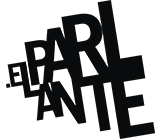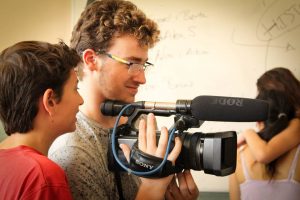Sometimes, explaining what we do is not very easy, we work on various topics and population groups in different spaces of formal education and leisure. We do not have a specific canon, each group and each territory is unique, there is no secret formula! What we can tell you is our experience and with what character the entity was created. And this has its own name, a whole field of study and praxis behind it: it is called Educomunicació.
By: Ana Cecilia Cervantes
Educommunication has had and still has many words depending on the school of thought it comes from, but in essence we are talking about the same thing. Many academics call it Media Literacy or Media Education, others call it Media Literacy and we, as heirs to the Latin American tradition of Paulo Freire and Mario Kaplún, prefer to use this concept, which links communication and education within the same context.
The most interesting thing about this strategy is that it converges and activates two disciplines that are advancing in parallel, although in principle they should be integrated. And you may ask yourself, if education is essentially an act of communication (Martínez-Salanova, 2009), how can they not be confluent? Because this binomial can only arise in a context of cultural, dialogical, global, interactive change, where teaching, as Freire said, is not transferring knowledge, but creating possibilities for one’s own production, for the construction of knowledge.
An educational revolution
As professionals of educommunication, we are aware that what we propose is revolutionary: to include techniques and media in educational processes, whatever their content, whatever their beneficiaries. It should be clarified that this is not a technological learning, it does not necessarily include manipulating cameras, networks or editing programs. The main objective of our strategy is to use these resources to approach a group of people overstimulated by screens and oversaturated with information.
We perceive it during the sessions, both young and old people comment and share content, every day, without verifying its authenticity, dragged down by trending topics
and the truths of the news. They never enjoy spaces in which to exercise their right to question, criticize or debate these projections of reality.
The change from an objectivist education, with absolute and indisputable truths, to a more constructivist one has opened the way for us. Emphasis has already begun to be placed on the differences that may exist within a given group. Now their expectations, motivations, interests, abilities and prior knowledge are taken into account, but there is still a long way to go. Students or the working group must be increasingly involved in their educational process. And only a more dialogical and participatory model will lead us towards definitive change.
Communication before technology
Fortunately we already know: machines will not replace people no matter how much technology advances, but it is necessary to know their constant changes and mutations. So if we think, like Marshall McLuhan, that the message is the medium , we still have it very raw. It seems that in many ways we are still moving in this metaphor of the rearview mirror:
“Perhaps, the mere acceleration of human events and the consequent increase of interfaces Between men and institutions they guarantee a multiplicity of innovations that alter all existing agreements (…) The ordinary human instinct makes people move away from these new environments, and rely on the rearview mirror as a kind of repetition or return to the previous environment, thus guaranteeing total disorientation at all times. Not that there’s anything wrong with the old vibe, but it just won’t serve as a navigation map for the new one.”
McLuhan and Parker, 1968
Once we overcome the profile of a teacher who knows everything, who controls everything, we have begun to take on new challenges as an entity, to learn during the process, to let the group talk and teach us new things. A more horizontal line of learning takes time, but in the long term it can lead us to new communicative and educational environments, as McLuhan proposed.
It is true, technology travels faster than us, but we must look forward, not lose sight of the landscape and give the content a critical perspective of society and current affairs. Rather, it is about turning the place of learning into a space for democracy, participation, the right to quality information, debate and, why not, the promotion and construction of new content.
If you still have doubts and want to know how we work educommunication in ElParlante, visit our projects page, or our YouTube Channel, you will find that the themes, work spaces and audiences are diverse. In the classroom we do La Cruïlla Comuna, Compartint Experiències, for example, and other spaces open to the general public we do Ciutat Esperança, Projecte Prisma or La Gran Gent Gran.
References
To review the concepts around educommunication and get to know other entities like ours, visit the following links, check the MOOCs and videos:
- Mooc’s of the Educommunication Seminar of ElParlante (2017)
- What is Media Literacy?
- Media Education: What does Finland do?
- Portal de la Educomunicación
- TVE-UNED special: Educomunicación, retos y desafíos
Do you think it can be implemented in your center or institution? Write your comments below!!


